
May 28, 2017
 Less Is More: Twelve Tips For A Really Good Or Maybe Just Slightly Easier Comic-Con International
Less Is More: Twelve Tips For A Really Good Or Maybe Just Slightly Easier Comic-Con International

 By Tom Spurgeon
By Tom Spurgeon
*****
Comic-Con International in San Diego is less than two months away. For all of the festivals and conventions springing up all over North America and around the world, San Diego Con is still The Big One for a big chunk of the American comics industry. It's the place to see mainstream genre-driven companies, book imprints and high-end alt-comics publishers all in one place. It's a wonderful place to take meetings. Even a minor player like this site by sitting down and talking to various publishers and businessmen has been able to do groundwork that has a positive impact for the next ten months. SDCC has a regal quality to it -- well, okay, as much as comics people can muster one -- for being an elder statesperson of such shows. They are very highly-skilled at solving logistical problems over time, and that's impressive to see up close. Comic-Con also allows comics a chance to see itself in the context of a wider entertainment industry. That can be a sobering or revelatory moment, depending on the witness, but it's a view I encourage everyone to take in at least once.
I've been doing a guide for a better experience in San Diego for over ten years now. It was one of the site's first hits. I hope to do a bigger, more comprehensive guide in the next few weeks if only because I love recycling old jokes and putting them in front of new audiences. For now, let's talk as if you've read one of these on here or elsewhere before now, and focus a bit on newer bits and pieces that have come up over the last few years.
This is a post for those going that have secured basic travel arrangements. Comic-Con has shut every door and window that I know of to score passes or snag a hotel room this late in the process, and I used to know them all.
*****
 1. Consider First Class Tickets.
1. Consider First Class Tickets.
This is going to sound weird in an article directed at an industry that tries to do things as cheaply as possible, but it's worth a reminder that a lot of airlines offer discounted first class seats when they are unable to fill them. You might take a peek a month or so out. One of the advantages of a first-class ticket on a segment, say going home, is that it makes a nice end of your trip after a weekend of pushing and shoving and sore feet. If you're taking a red-eye, like I do, that upgrade can be the difference between starting a new day when you get home or going right back to bed and wrecking the first half of your work week.
Another advantage is that if you have luggage you need to bring or take home -- or both -- to facilitate your trip, you frequently get free bag check-ins with a first-class ticket. If you have two bags that you stuff to the ascribed weight limit, or plan on doing so, this might make up the difference between economy and first-class all by itself.
Delta in particular offers a steep discount close to flight time. I've had trips from one coast to the middle of the country where I live now come in at $49 for an upgrade.
*****
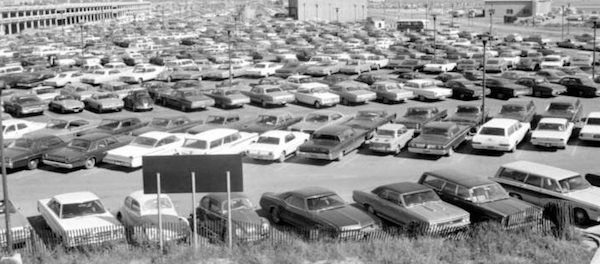 2. Maybe Park At The Airport.
2. Maybe Park At The Airport.
I can't imagine this is welcome, and it might not even be totally legal, but this is the tip for which I've received the most thank-yous in recent memory. For about five years I was driving down to San Diego from Los Angeles. Rather than pay the $45 parking fee at my excellent hotel, I would drop my brother off or he me at the hotel and the driver would then park at the Airport. From there it was a shuttle ride to the airport itself and you could catch a bus, or you could walk to a train stop. When the time came to leave San Diego, the driver would do this in reverse, or sometimes even take a cab over to the airport. With four days at the show and $7 parking per day in one of those big lots, this cleared enough money for the hassle to be worthwhile.
There is some time spent, though, and you should look at the maps before you try it. It's possible this was only available to us because of the temporary parking situation, and that with regimented parking there's some sort of ticket-necessary step that would scotch this. Be careful.
*****
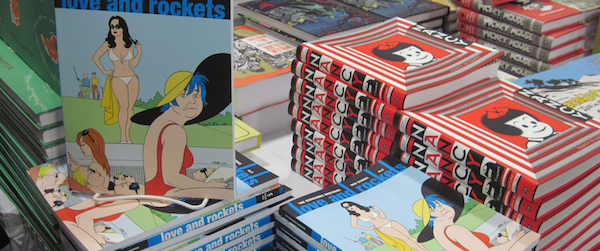 3. Consider Casual Clothes On Their Last Legs To Make Suitcase Room.
3. Consider Casual Clothes On Their Last Legs To Make Suitcase Room.
People made fun of this when I made it an underwear thing on last year's tips list, but it's really all about clothes in general and it's another tip for which I've received many thank-yous. Unless you're in that rare strata of working pro also hand-carrying to the convention, you may end up with more stuff going home than you had on arrival. Look at all those books! They're heavy and you need to find them room!
One way to ensure room in a suitcase is to to make your casual clothes -- your sleeping outfit, your underwear, maybe shorts or even gym shoes -- the worst ones you have at home, and thus disposable. Then, at the end of the weekend, just toss them in the trash (and double bag your underwear doing so). Look at it like they were going to be tossed eventually, so why not in a way that helps you out? Workout shoes in particular make a lot of room, and you can get in the habit of buying new ones after San Diego.
*****
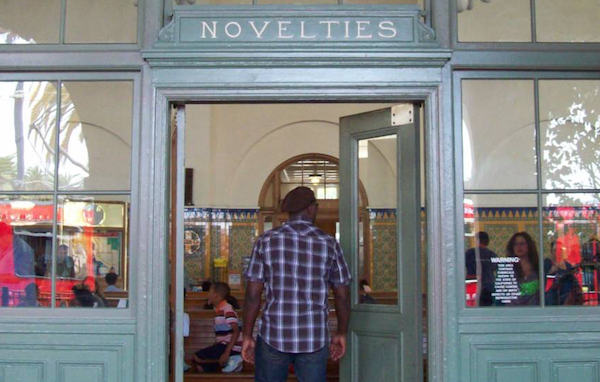 4. Maybe Don't Do The Business Class Seats On Amtrak For The LAX To SAN Run.
4. Maybe Don't Do The Business Class Seats On Amtrak For The LAX To SAN Run.
This is a new one. I always recommend the business class ticket for
Amtrak from San Diego to Los Angeles (or nearby) because the lines are funneled and the crowds are huge in a way that it might make it hard to find a seat on the train itself with the Economy option. I am going to reverse myself on this for trips Los Angeles to San Diego. Think about maybe skipping the business class upgrade on that segment unless 1) you're coming down at a mid-morning prime time, 2) if you're going solo and don't care with whom you sit.
According to my experience last year and talking to Amtrak's help line, you will not get an assigned seat just for being in business class. I swear you used to! Not anymore. Thus some of the comfort of that extra money spent is gone before you started, the part where you don't have to rush on and try to grab a seat for yourself or for two or more people together. Certainly the likelihood you'll get to sit next to a travel companion is pretty much ripped away 30 seconds in. People like nothing better than surging forward in a line and nerds are
good at it.
All you're really buying is the ability to have a seat, to be able to sit down. That may still be worth it for you, but on most trips down it's always seemed to me the only overflow I ever saw was well south of
Union Station, usually people going to the track at
Del Mar.
I will skip it this year and tell you how it goes.
*****
 5. Break Out Of The "Hollywood Ring" To Eat.
5. Break Out Of The "Hollywood Ring" To Eat.
Here's a thing about the Hollywood presence in San Diego. These big entertainment companies, organized around film and TV, have not only over taken over parts of the hall and a substantial chunk of the programming schedules but in recent years they've settled into the first few blocks north of the convention center. Nearly every bit of empty commercial space has a big attraction of some kind, or has become a pop-up attraction. The crowds have responded -- both people with tickets to the show and large number that don't have them. This stuffed neighborhood feeling extends to places to eat and places to socialize on other folks' dimes. It may be even worse than just natural expansion. There were rumors last year that restaurants right next to the show that had open tables were keeping them open for celebrities and media types rather than well, you and me. I checked this out once and was turned away from a 2/3 full restaurant, but that could have been just regular rezzo issues. Plus, I'm kind of a mess.
My suggestion is to punch out of the first few blocks surrounding the show. There are a lot of locally-owned ethnic restaurants outside of the immediate ring that have seemed empty as heck the last few years. Good Italian; good Persian. If I don't have a reservation. that's where I head.
Bandar,
Sadaf,
de'Medici,
Rei Do Gado,
Cafe Chloe and
the Grant Grill are a few places I've eaten that are moderately to more expensively priced.
I've also walked in at cheaper places -- not that much cheaper, really, it's a big-city downtown -- that were quite good but they have a shorter lifespan so I'm not sure which ones have remained. Pretty sure
Mint Downtown Thai was one. A friend of mine last year really liked
Crab Hut.
Pokez endures.
Eating in other San Diego neighborhoods is great, too, and easy to arrange in this age of
Uber and
Lyft. Since it is a summer weekend in San Diego more generally, I'd suggest finding something that lets you make a reservation. It strikes me as a great eating town.
With the show programming events into the evening and the comics industry proper no longer throwing as many primetime parties as they tried to manage once upon a time, spending a little more care with dinner and your core group of pals or workmates is a nice way to fill your off-duty hours.
*****
 6. Take Meetings.
6. Take Meetings.
If you are an industry professional of any type that could use some face time with comics industry luminaries, San Diego is the best place to do it. Very few executives are so involved at the retail/on-floor level that they don't have time to meet with journalists or other interested potential business partners, except maybe hopeful creators. Further, a lot of the writers-about on hand are more interested in round-tabling a discussion with the cast of
Supernatural --
Supernatural is this huge specific to Comic-Con success story someone should write about someday; just try getting that giveaway bag -- than they are at picking an Editor-In-Chief's brain about forthcoming publishing strategies or discussing with comic-shop owners what works or doesn't work in their store. That shouldn't stop anyone with an industry interest in terms of coverage or participation from reaching out; the opposite should be true, in fact. People have slots -- SLOTS -- to fill, and you can fill them.
Even if it's just an informal meeting of your people over drinks, Comic-Con's a great time to step back and take stock of the second half of any publishing or working year spent in one of these industries. I sometimes feel we survive Comic-Con rather than making use of it. Use that time to reflect, to communicate and prepare to finish the calendar year strong. If you can't think of a meeting to have,
.(JavaScript must be enabled to view this email address)
*****
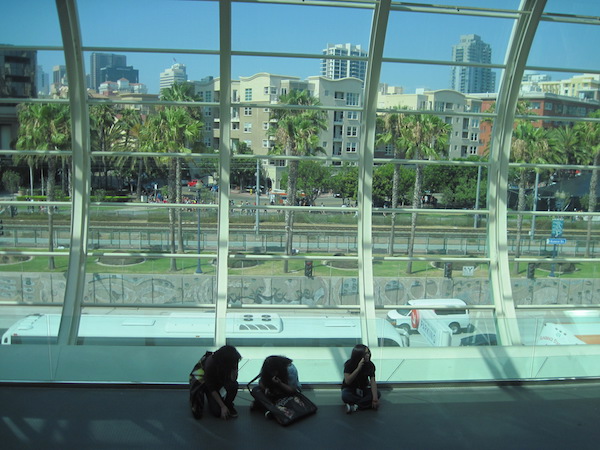 7. You Can Maybe See Some Big Panels Again?
7. You Can Maybe See Some Big Panels Again?
I don't want to promise anything, but I use outside writers and support people from LA for
CR at the show, and each of the last two years the person in this role talked about walking into Hall H mid-day with a minimum line wait. We're certainly to all eyes past the bonkers era of those deliciously fevered
Twilight fans, and studios approach the big halls differently now. I also suspect there are more fans there for the general experience or a variety of favorites as opposed to soulful devotion to 1-2 franchise juggernauts, but just the
possibility of this is quite the testament to how well Comic-Con International is organized.
Now, just because I wrote this it will probably be out-of-this-world again for a couple of years, but I thought it worth mentioning. No harm in checking out a line before you stand in it, and some might be worth checking out for the first time in a decade or more.
*****
 8. The Bartender Outside The Eisner Ballroom Has A Shorter Line.
8. The Bartender Outside The Eisner Ballroom Has A Shorter Line.
I see this every year. There's a bartender -- sometimes two, maybe? -- inside the Hilton ballroom where
the Eisner Awards take place, and one in the hallway outside the ballroom. The one in the hallway almost never has a line.
In the past you've also been able to carry in. There's
a deli place to buy beer right across from
the other Hilton near the
Omni/
Hard Rock nexus you can google and then use to shove a few cheap drinks into a backpack. Or 30. It's a long night.
*****
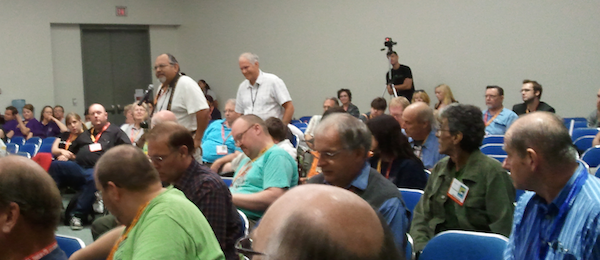 9. Do Panels Half-Way Through To Minimize Time Lost In A Waiting Line.
9. Do Panels Half-Way Through To Minimize Time Lost In A Waiting Line.
I do panel drop-ins enough anymore that it might constitute a tip. In general, I suggest an "every half-day" strategy to planning your time at conventions. Find those events you
have to do and if possible make your entire AM or PM devoted to doing that event. That way you get done what you need to get done and everything else is a bonus. So if you're dying to see your childhood hero
Tom Palmer talk about inking
Big John Buscema, or
Los Bros reminisce, or whatever: you get in line for that one a bit early and drink in the whole event.
I do something different with the majority of the panels I see, in that I drop in about a third to half way through. You can't do this with the mega-panels, and you can only rarely do this with some of the more intimate offerings featuring bigger stars of the mainstream comics world (aka anything
David Brothers moderates). There are also panels like the live-drawing panels and with con favorites like
Stan Sakai that are always a tough seat. Most panels do have seats open, though, and if you just want a taste of what they're like, you can usually walk right in between ten to forty minutes in and save yourself some line time. Be respectful and stay near the back if you can, and walk deliberately in and out so as to minimize the anxiety you're causing the panelists.
As to the picture illustrating this point, I used it because it's a well-attended panel, but you can certainly see plenty of seats in there.
*****
 10. The Big Rules Of Networking: Sideways To Go Up; Be Your Own Agent.
10. The Big Rules Of Networking: Sideways To Go Up; Be Your Own Agent.
It's amazing to me year after year how fundamentally bereft of basic networking skills comics professionals and creators seem to be, and this isn't a group held to a lofty standard in that area. If you're going to meet people and get work done via the meeting of people, do take advantage of all official opportunities to do so. Comics can be quite good at spotting overpowering work in a way that prose and film and TV aren't, I think. I'd much rather cast Hamlet from unknown actors than start a shared-universe comics line from unpublished comics people. If you're ready to go, that will almost always be spotted so any chance to do so that's convenient to someone else should be seized. But the more conversational stuff? Getting your name and face out there? A little trickier.
First, check in with anyone you already know beforehand, if only on-line, about the chance to say hi and explicitly about anyone you might want to meet so they can help you do this. It's peers on either side that almost always get you access to someone "higher up." And it's those same peers of yours that will be the higher-ups in a half-decade's time.
I think people worry too much about not being cool, but really the only
faux pas is to break into someone's social interaction or focused business time in a rude or brusque way. If you can avoid doing that, you're gold. If you want to meet someone talking with someone you know, sometimes just standing in your pal's line of sight for several seconds will give you an idea how you'll be treated stepping forward. In general, people want to introduce people they know to other people they know, to get credit for the meet and just to be friendly. I think we all can tell when that isn't going to happen. No one minds friendly conversation. The second skill is to be able to tell when you're just going to get a hi how are you and when you can actually push the conversation in a utilitarian-for-you direction. The first time is often just a meet and greet, a conversation setting up another conversation down the line.
A key for those conversations, as well? Be your own agent. Your friend is exhausted and might be hung over or just baffled by the light display on the
Krull relaunch exhibit across the way. Introduce yourself when you have the space to do so. Be able to handle your part of the chat. Remember no one specifically wants to see you fail -- not until you're famous, anyway. If nothing else works, screw up your courage and imagine you're the cheesy salesman of you.
In general? Don't worry about this stuff too much. I know very few people who have wormed their way into any job or gig in comics solely based on their social abilities, and know ten times that number for whom conversation is and remains something akin to death on toast. It can be useful, though, for many people. Just be nice and read the room, even if by room it's three people facing each other as an island on a sea of costumed, exhausted madness.
*****
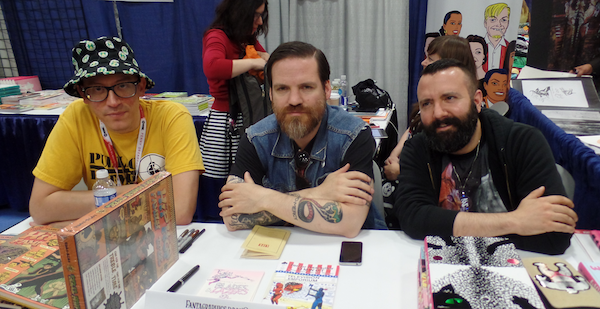 11. Follow-Up Immediately... Or Sort-Of Immediately.
11. Follow-Up Immediately... Or Sort-Of Immediately.
It's always disconcerting how many people you talk to at San Diego that mention the same plans for this year that they had last year. I think part of this is that helpful follow-up just doesn't take place during the just-after period of collapse/recovery. Don't let things slide. The collective memory for all conventions is way shorter than it used to be, so if you don't follow up soon it may feel like you put it off for too long a while. I suggest Wednesday for brief catch-ups, just saying hi, or thanks, and the next week's Tuesday for anything that requires action -- that delay out of respect for the other person's recovery time. If you actually talked about dates to get things in, or to touch base, follow those explicitly.
One great thing is if you're hitting the circuit at more than this show, and if you do your part in prompt, professional fashion, the Fall shows serve as a reasonable place to bring up the summer connection and ask after it if nothing has yet moved on that front. I know that I get dinged a lot at the September/October weekends about promises made in July, and I think rightly so. No one
wants to come back from an intense working weekend with more work, but that's the nature of the gig. Do your part.
*****
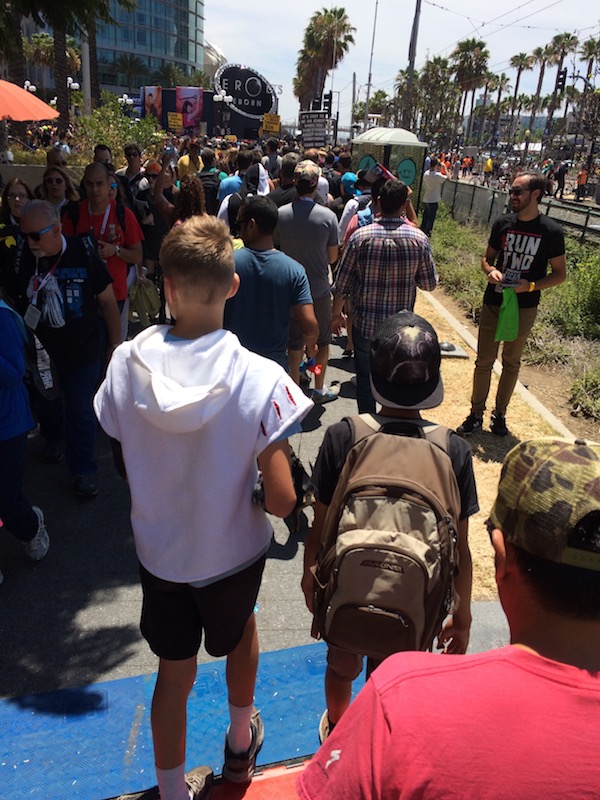 12. It's Not The Distances, It's What's In Your Way
12. It's Not The Distances, It's What's In Your Way
It seems weird to suggest limiting your walking at a place where walking is everything, but here we are. The spread of Hollywood-related activities across the street has made getting to and from the convention center extremely difficult. I'd suggest doing what you can to limit the amount of walking you have to do. For instance, just a few years ago Jeff Smith and I moved a morning meeting from the hotel where we were both staying to a hotel with a great breakfast spread and a mostly quiet room. It took us each about 40 minutes to get there and back (a 15-minute roundtrip without people in the way), and I can't imagine any sane people walking a half-hour plus bonus period for the sake of a few more muffins now.
This mass of people has also put a great crimp on leaving for lunch (I carry in a small lunch and eat it on the back porch), and the time you spent getting to happy-hour parties or to the Eisners. It's also much more tiring. Inside the convention center you should familiarize yourself with the back of the convention center in terms of getting upstairs, with the outer hallways more generally, and maybe not take a trip to the showbiz end of the expo floor during the prime times of Friday or Saturday. Many of the comics panels are at the far end of the show now, too, so work in extra time to make it all the way to those.
If you're headed up more than a few blocks away from the Convention Center, maybe take a look at the bus schedules for a shuttle that gets you close. No shame there; that's what they're for.
My Mom was sweet enough to ask after what San Diego was like and so I took her last year. She's an old comics fan and just wanted to see the thing that kept popping up in her newspaper and in conversations with her friends. She's in her 70s, and had a great time, and was blown away by crowds and fascinated by the panels, and bought some comics. Still, the single thing she remembers more than any other is the wear and tear on her feet, and how hard it could be to get from one place to another even if you could see it from where you started. So comfortable shoes, everyone, more than ever, and think like a super-lazy person.
*****
photos not ganked from historical sites are by Whit Spurgeon, including the one below
*****
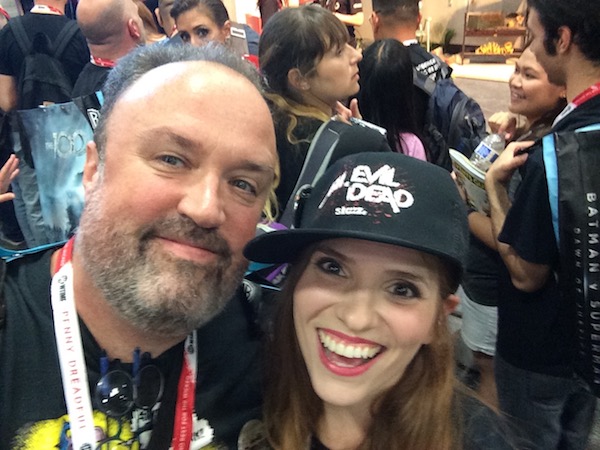
*****
*****
posted 6:00 pm PST |
Permalink
Daily Blog Archives
November 2019
October 2019
September 2019
August 2019
July 2019
Full Archives


